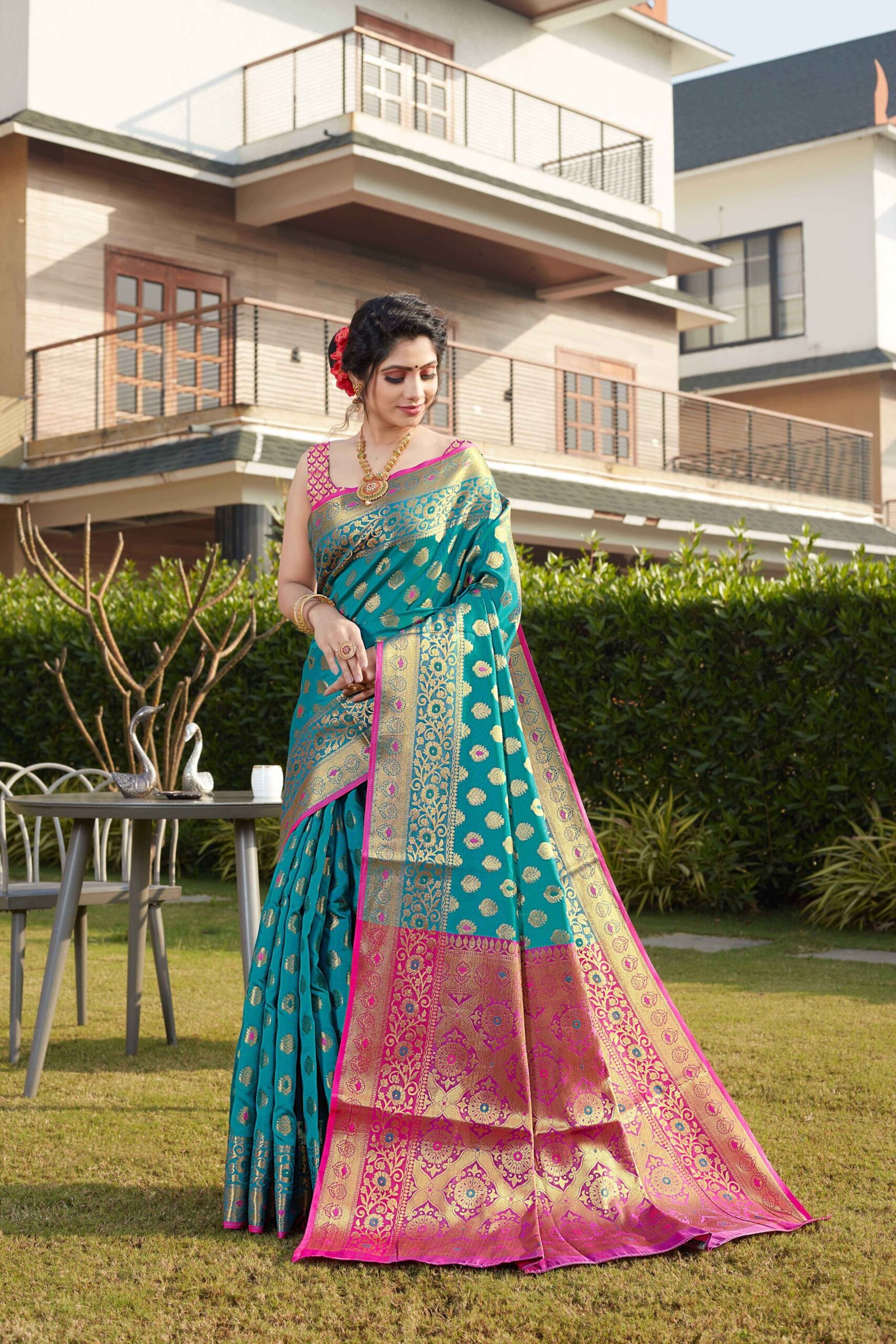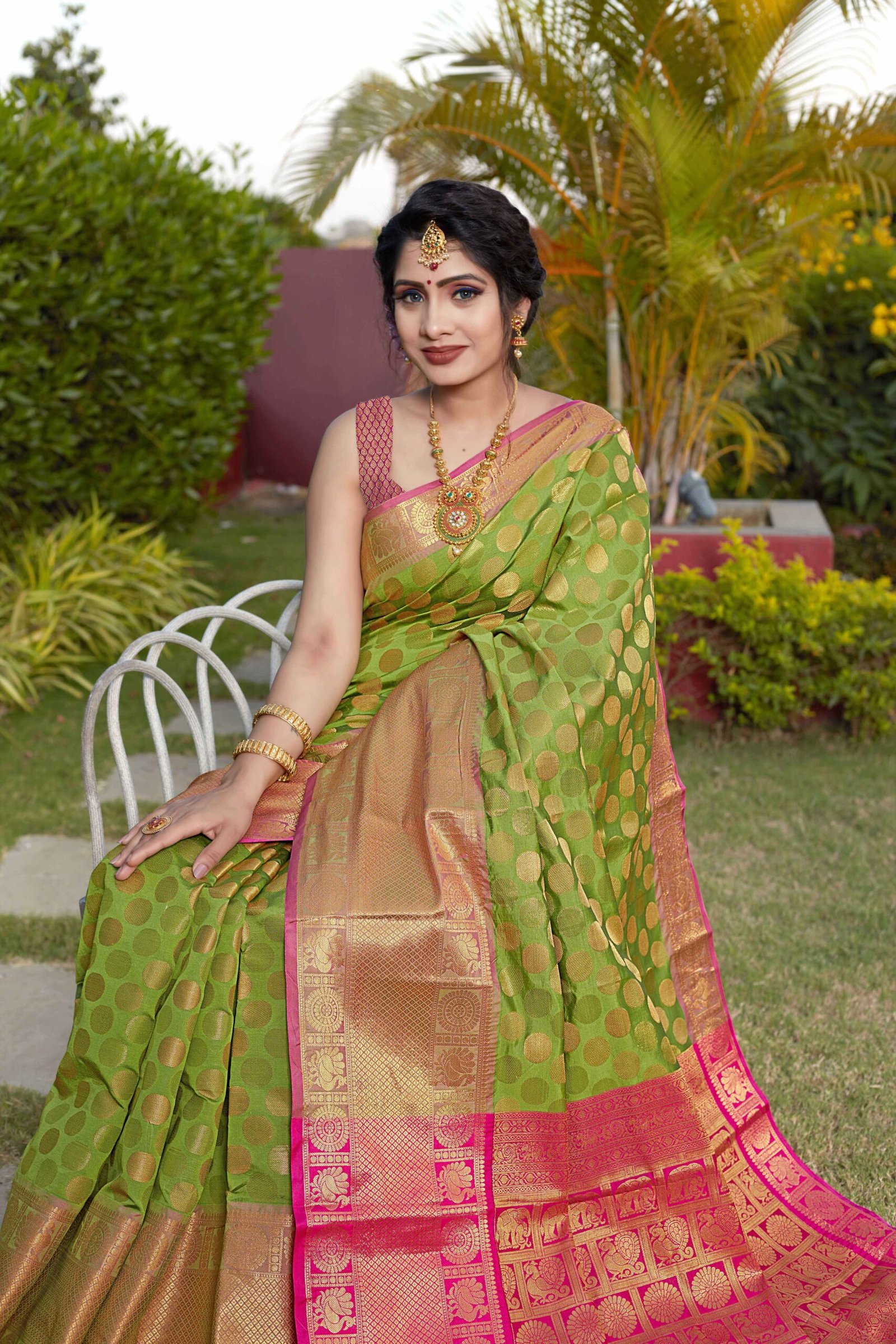Banarasi Saree Silk saree for women stand as epitomes of elegance, luxury, and heritage in the rich tapestry of Indian textiles. With their intricate designs, opulent textures, and centuries-old craftsmanship, these sarees hold a special place in the hearts of millions of women across the globe. This article embarks on a captivating journey through the origins, weaving techniques, cultural significance, and contemporary relevance of Banarasi silk sarees, exploring how they continue to mesmerize and enchant generations with their timeless beauty
Origins and History:
The history of Banarasi Saree Silk dates back to over five centuries, tracing its origins to the ancient city of Varanasi (formerly known as Banaras) in Uttar Pradesh, India. It was during the Mughal era that the art of weaving silk flourished in this region, under the patronage of emperors like Akbar. The weavers, known as “karigars,” meticulously crafted these sarees using gold and silver threads, creating exquisite designs inspired by Mughal architecture, Persian motifs, and local flora.
Weaving Techniques:
What sets Banarasi silk sarees apart is the intricate weaving technique known as “kadwa” or “zari.” Skilled artisans handloom these sarees using traditional pit looms, where the patterns are woven directly into the fabric. The zari work involves the use of pure gold or silver threads, intricately interwoven with silk to create elaborate designs such as floral motifs, paisleys, and intricate borders. The craftsmanship involved in weaving a single Banarasi saree can take weeks or even months, depending on the complexity of the design.
Types and Varieties:


Banarasi silk sarees are renowned for their variety, with different types distinguished by their weaving techniques, motifs, and embellishments. The four main types include Katan, Organza (Kora), Georgette, and Shattir. Katan silk sarees feature pure silk saree threads, while Organza sarees have a sheer, lightweight texture. Georgette sarees are known for their fluid drape, while Shattir sarees have a rich texture achieved through specific weaving patterns. Every kind has a certain allure and charm that suit a range of tastes and situations.
Cultural Significance:
In Indian culture, Banarasi silk sarees are deeply symbolic, even beyond their aesthetic value. They are an integral part of traditional ceremonies and rituals, symbolizing prosperity, auspiciousness, and familial heritage. From weddings to festivals, these sarees adorn women of all ages, signifying grace, beauty, and tradition. The intricate motifs woven into the fabric often convey stories from Indian mythology or reflect the cultural ethos of the region, adding layers of meaning to these exquisite creations.
Contemporary Relevance:
While rooted in tradition, Banarasi silk sarees continue to evolve to suit modern tastes and preferences. Contemporary designers are experimenting with innovative color combinations, modern motifs, and lightweight fabrics to make Banarasi sarees more versatile and accessible to a global audience. With the rise of sustainable fashion, there’s also a growing emphasis on eco-friendly practices and ethical sourcing of materials, ensuring that the legacy of Banarasi silk weaving remains sustainable for future generations.
Conclusion:
In conclusion, Banarasi silk sarees are not just garments; they are living embodiments of India’s rich cultural heritage, timeless craftsmanship, and enduring elegance. From the royal courts of yore to the fashion runways of today, these sarees have stood the test of time, enchanting connoisseurs with their unparalleled beauty and craftsmanship. As we celebrate the legacy of Banarasi silk weaving, let us continue to cherish and preserve this timeless art form, ensuring that its splendor continues to inspire generations to come


